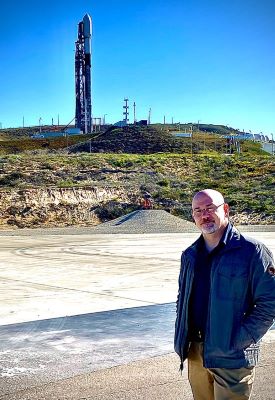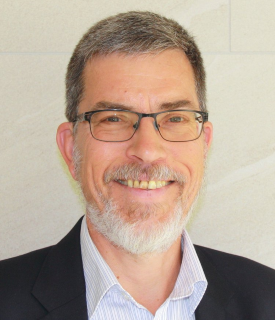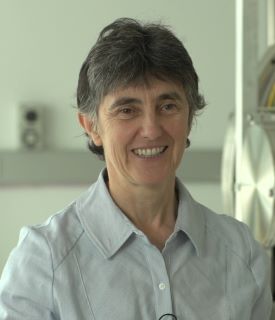The Australian Academy of Science, in collaboration with NASA and the Australian Space Agency, presents a public lecture by Eric Ianson.
As Deputy Director of NASA’s Planetary Science Division and Director of the Mars Exploration Program at NASA Headquarters in Washington, Eric Ianson helps lead agency missions to explore our solar system, often working closely with international partners.
In this public lecture at the Shine Dome, Eric will highlight current and upcoming missions, such as the Europa Clipper mission to look for potential markers of habitability on Jupiter’s icy moon, Europa.
He will also talk about NASA’s OSIRIS-REx mission’s recent special delivery to Earth, a sample of the asteroid Bennu, as well as the agency’s plan to return Mars samples currently being cached on the planet by the Perseverance rover.
Following Eric's presentation, Emeritus Professor Fred Menk will present on the interests of the Australian space science community. This will be followed by a Q&A session involving both speakers.
Date: Friday 12 July 2024
Time: 10.30am – 12.00pm AEST
Venue: Shine Dome, 15 Gordon Street, Acton ACT
Cost: Free

Eric Ianson is currently Deputy Director of the Planetary Science Division and Director of the Mars Exploration Program at NASA Headquarters.
In this role he supports the exploration of the solar system, including missions to, and research of, the planets, moons and small bodies (asteroids, comets, Kuiper belt objects, etc.). He also serves as Program Director for the Mars Exploration Program and the Radioisotope Power Systems Program.
From 2015 to 2019, Eric was the Associate Director of Flight Programs in the Earth Science Division of the Science Mission Directorate at NASA Headquarters.
In this role, he oversaw all NASA Earth Science satellite and airborne programs and projects, as well as the data systems that house and distribute the data from these programs and projects.
From 2013 to 2015, he served as Deputy Associate Director for the Earth Science Projects Division at Goddard Space Flight Center (GSFC). This position also included responsibility as Deputy Program Manager for both the Earth Systematic Missions Program and Reimbursable Projects Program.
He has previously served as a Program Executive at NASA Headquarters, beginning in 2004, for several Earth Science missions, including OCO, OCO-2, Aquarius, and SMAP.
He also served as Acting Program Manager for the Earth System Science Pathfinder Program from 2004 to 2008 and led efforts to transition this role to Langley Research Center. Eric also served on a detail to GSFC, as Mission Manager for the IRIS project, a Heliophysics mission that was successfully launched in June 2013.
Eric has experience working with various NASA Centers and has participated in international and interagency partnerships.
Prior to joining NASA, Eric worked for the Department of Defense for 14 years, involved in program and project oversight for the US Navy on missiles, combat systems and associated equipment.
Eric received a B.S. degree in Mechanical Engineering from the University of Rochester and an M.S. degree in Aerospace Engineering from the University of Southern California. He is also a graduate of the Leadership for a Democratic Society program at the Federal Executive Institute.
More about Eric can be found on his page on the NASA website.

Fred Menk is Emeritus Professor of Physics at the University of Newcastle and Fellow of the Australian Institute of Physics. He has 40 years’ experience in space science research, and as former chair of the Academy’s National Committee for Space Science was responsible for developing Australia’s 2022 strategic plan for space science.
He has served in a range of academic and international research leadership roles, chaired external reviews of domestic and international academic and research programs, and convened numerous national and international symposia and outreach events. He was Education Program manager in the Cooperative Research Centre for Satellite Systems and a project manager for FedSat, Australia’s most successful spacecraft.
With research interests in plasma and magnetospheric physics, remote sensing, and medical radiation physics, Fred has mentored over 30 HDR students, with nominations for supervisor of the year. He is co-recipient of two Engineers Australia national Excellence Awards, and for many years served as national representative to COSPAR and to SCOSTEP, the principal scientific bodies representing international space research and solar-terrestrial physics respectively.

Professor Christine Charles FAA is Head of the Space Plasma, Power and Propulsion Laboratory at the Australian National University.
For the past 25 years, she has been working on experimental expanding plasmas and their applications to astrophysical plasmas, electric propulsion, microelectronics, optoelectronics and hydrogen fuel cells.
She is the inventor of the Helicon Double Layer Thruster, a new electrode-less magneto-plasma thruster for space use.
events@science.org.au
events@science.org.au
© 2025 Australian Academy of Science